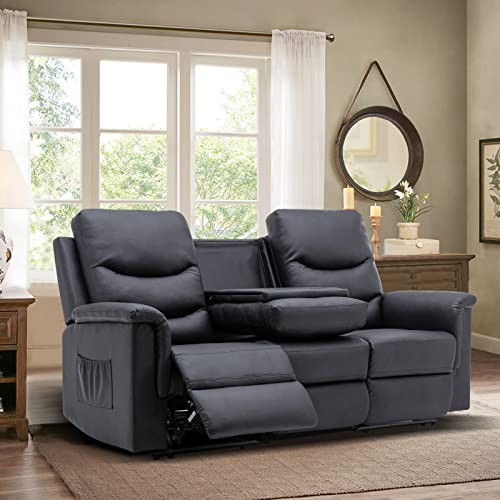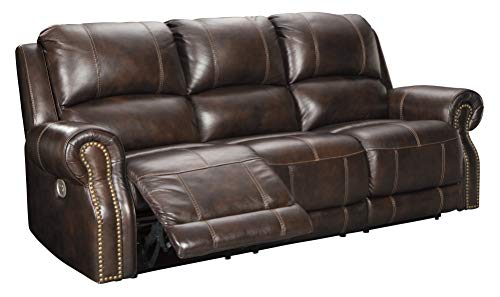Community
커뮤니티| 10 Wrong Answers To Common Genuine Leather Sofa Questions: Do You Know The Right Answers?(102.165.1.70) | |||||
| 작성자 | Hannah | 작성일 | 24-10-16 04:19 | 조회 | 28 |
|---|---|---|---|---|---|
관련링크How to Spot a Genuine Leather Sofa
 With a buttery-soft tufted leather couch upholstery this sofa looks fantastic in any room. People love its simple design and premium genuine leather upholstery. With a buttery-soft tufted leather couch upholstery this sofa looks fantastic in any room. People love its simple design and premium genuine leather upholstery. But recognizing real leather from fake leather can be a challenge to the untrained eye. Here are six ways to help you differentiate between the two types: 1. Edges that are rough. But recognizing real leather from fake leather can be a challenge to the untrained eye. Here are six ways to help you differentiate between the two types: 1. Edges that are rough.1. Take a look at the label Real leather is hard to duplicate. It has a distinctive feel and look. It's also robust and easy to clean. It doesn't absorb excess body oils, which makes it a great choice for families with allergies. However not all leather sofas leather are made to be the same. In fact, some sellers have been known to misrepresent PVC as genuine leather. To avoid being scammed, it's crucial to understand the different types of leather. This includes determining the differences between top and full grain leather, and also evaluating the quality of the upholstery material. The most knowledgeable retailers are more than willing to share this information, so don't hesitate to inquire! The first step to identify a genuine leather sofa is to look at the label. It should clearly state what type of leather the sofa is covered in, as well as any other material such as fabric or cotton. In addition, reputable suppliers must have clear policies for return or exchange in case you're dissatisfied with your purchase. If the sofa doesn't have a label but you can figure out its authenticity by examining the fabric backing or opening up the cushion casing to check for synthetic materials. You can also examine the texture of the leather to determine if it has any imperfections or bumps, since these are indicators that you're dealing with fake or bonded leather. You can also test the quality of the sofa by touching its surface. Genuine leather is soft and smooth in texture. Faux leather or bonded leather is coarser and feels more like suede. You should also be able to discern the difference between wrinkles, bumps and printed patterns of faux leather and genuine leather. A genuine leather sofa is more expensive than its imitation counterpart, but it will last longer. It could become an important family heirloom with time. Place your leather sofa in a bright cool, cool space, away from heaters, fireplaces, and air cooling units. This will reduce the damage caused by heat, humidity and Ozone. Creams for protection on leather can be used to keep your leather sofa strong and supple. 2. Take a look at the back If the label doesn't tell you what kind of leather sofa is, it's important to get up close and close to it. The smell, feel, and back will all be unmistakable indicators of authenticity. If you touch the surface of genuine leather, it won't feel perfectly smooth. This is because animal hides have diversely shaped pores that allow them to breathe. A product that feels totally smooth may be fake leather. Look for bumps or uneven surfaces. Genuine leather is prepared by buffing away the rough outer layer. But if the material used to cover your sofa is top-grain leather it should still have some bumps. You can also test the leather by running your fingers over it and pressing into it. If it is real, the leather will stretch and wrinkle a little similar to human skin. This allows the leather to breathe and prevents it from becoming dry or cracking over time. Faux leather has a consistent pattern because it is printed, while genuine leather is prone to imperfections that contribute to the beauty and durability of the leather. This can be seen in scratches, creases and scuffs. Genuine leather is soft leather couch and a bit stiff when it is new. However, it won't crack or dry out when you treat it regularly with a leather protection cream. Some furniture makers mix real leather with synthetic leather in order to save money. The 'contact' areas, such as seats and armrests as well as backs, are made of real leather, while the non-contact portions such as the outside and base arms are upholstered using a less expensive synthetic fabric made of polyurethane or leather. Even if the couch is labelled as genuine leather, you should take a close look at the backing to determine if it is genuine leather. Labels and pricing can help you identify a genuine leather sofa It is however important to inspect it up close. Take a whiff, rub it and look at its back for a backing made of polyurethane that is a clear sign that it's not genuine leather. 3. Check out the seat The seat of a genuine leather sofa is an additional sign of its high-quality. While many faux leather couches use a mixture of materials for the upholstery authentic leather has a distinct texture that is soft leather sofa to the touch and is not completely uniform in color and shade. Look for bumps beneath the surface and a rich natural, fresh scent. These characteristics differentiate real leather from fakes and low-grade leather. If the leather is stitched in a continuous, huge piece, it's a obvious sign. This is common with faux leather but when it's seen on real top-grain, you should avoid the sofa. Pricing and labels may provide a clue however the only way to be sure is to sit down with the furniture. Genuine leather shouldn't be perfect and not feel uneven. It will also have rough edges and fat wrinkles beneath the surface. Genuine leather feels supple and different from synthetic materials. The temperature of the furniture can also indicate whether it is genuine. Leather sofas are a staple of interior design and for good reason. They're elegant, durable, and long-lasting. It's also easy to clean and resistant to spills of liquid. This makes it a great option for families with children or pets. Genuine leather is a timeless design that will never be out of fashion. It's also available in a variety of price ranges. If you're looking for a classic leather sofa that will stand the test of time, look into the Pottery Barn Turner. While this two-seater is priced higher however, it's constructed with high-end top-quality leather and features a timeless design that won't date quickly. This is a great option for those who have limited space, as it comes with three sizes and fits in most rooms. This All Modern Geo Genuine leather corner sofa sofa is a great choice if you want something more contemporary. This mid-century modern-inspired sofa features an elegant, angular style with a round pillow and an elegant frame. The sofa is made from plywood composite, plastic, and. However, the leather is only used for the seating area. It's a step up from Ikea’s Faux Leather Couch-leather sofa, which won CHOICE's "Shonky Award" in 2015. 4. Check out the smell Genuine leather has a distinctive smell that is a natural organic skin scent that cannot be duplicated. If the sofa that you're considering buying has a strong synthetic smell it's not authentic. This is usually caused by the chemicals that were used to process leather. These chemicals can remain on the furniture even after it's been made. You can check the quality of leather by moving your fingers across the surface. Real leather will have bumps and lumps similar to the human skin. If it feels smooth and cold it's likely fake or bonded. You can also open one of the cushions and examine the backing. The faux and bonded leathers will have some form of polyurethane backing to help support the fabric, whereas genuine leather has a natural backing that is similar in appearance to coarse suede. If you notice a woven backing, this is an obvious sign that the sofa isn't real leather. Peter says that the best way to tell if a sofa is real is to gently run your fingernails over the surface. The scratches on the leather will make your fingernails duller and the leather should stretch and wrinkle a little. It will also feel warm and supple to the touch. Another way to determine whether a sofa is genuine is to turn it over on its side and check the back of the sofa. Genuine leather is a continuous piece of leather, not a plastic coated faux or the bonded leather. Consider how often you'll use your leather sofa and how long it will last when choosing the quality. The more you use your couch, the more care it will require. Peter suggests regular, gentle cleaning using a leather conditioner. This will help keep the leather's softness and prevent it from drying out and becoming hard. |
|||||
